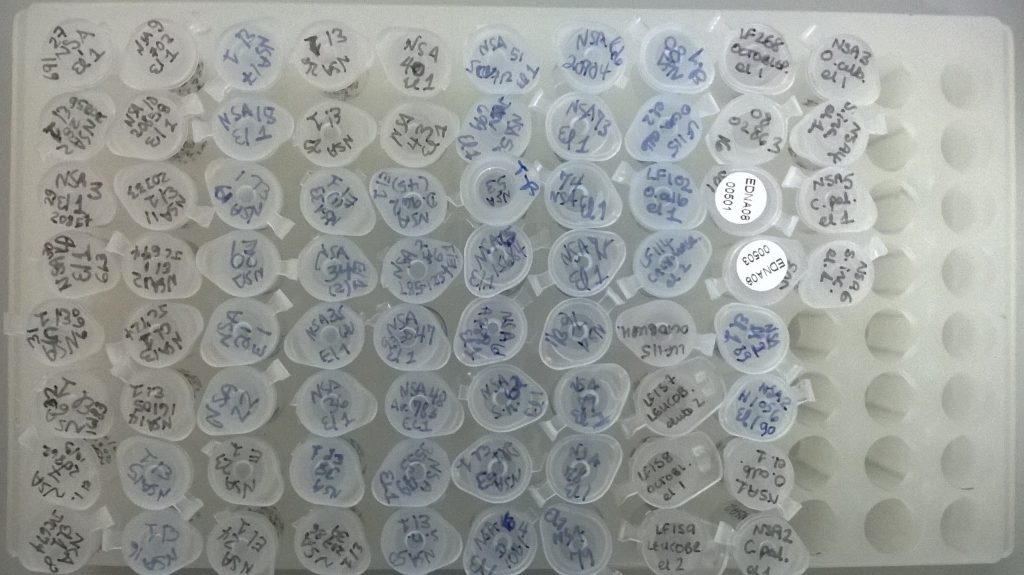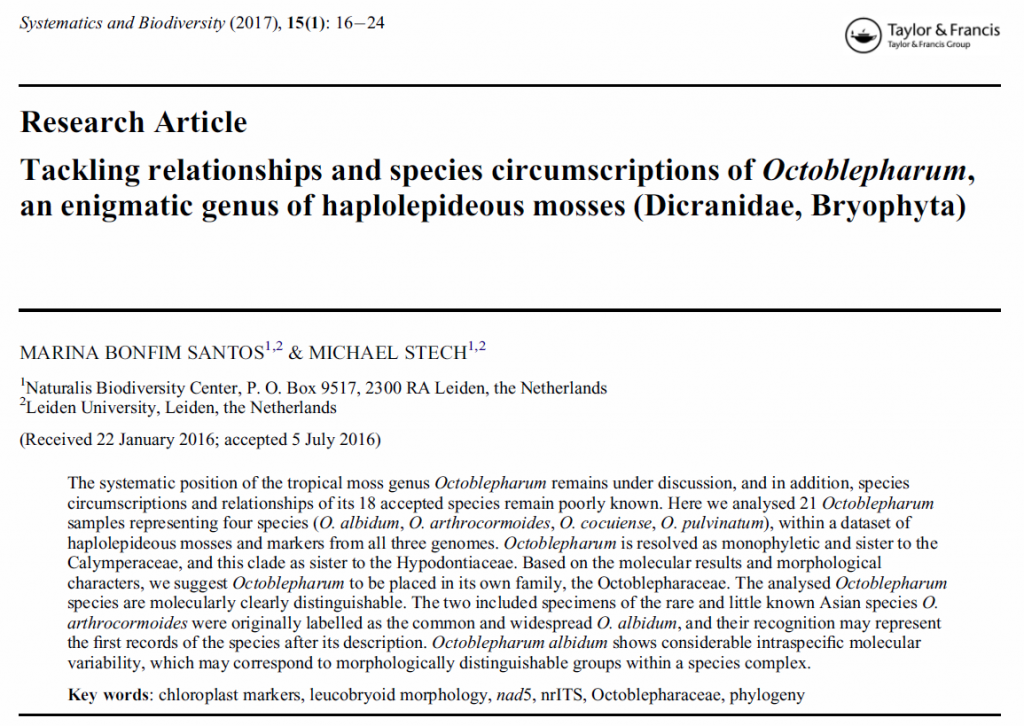As far as our 2013 RBGE MSc project proposal to generate a phylogeny of Octoblepharum goes, Juan Carlos Villarreal, Noris Salazar Allen and I were clearly not the only people to think of working on the genus: earlier this year a group in the Netherlands published their own study of the group, based on 21 accessions from the genus.
Santos & Stech (2017) generated a lot of DNA sequence data, with an aligned matrix of over 5000 bases (of which 1513 were parsimony-informative across the Dicranidae). Their analysis identified four main lineages within the genus itself, but can also be used to infer that the widespread and weedy species Octoblepharum albidum may be comprised of several distinct taxa.
One of the Octoblepharum albidum accessions that was sequenced, from the Netherlands, resolves with accessions from Brazil, Honduras and Nicaragua. The European accession was collected in a glasshouse in the Hortus Botanicus Leiden, and is described by the authors as “likely of Neotropical origin”. Given further sampling and DNA sequencing from within the widespread species Octoblepharum albidum, it seems that we really could elucidate the geographical origin of weedy or cultivated specimens, be they found on palm trunks in the US, or as volunteers in botanical gardens.
Now that I’ve unearthed Noris Salazal Allen’s Octoblepharum DNA samples from an uncurated bag in the back of the RBGE freezer, it’s tempting to try adding some DNA sequences from them into this larger matrix. After all, we have 31 additional accessions of Octoblepharum, mostly from Panama, but also from Bolivia, Costa Rica, Venezuela and Florida, that we should be able to place.
For now, however, I will have to be satisfied with curating the DNA and putting it back into the freezer, as my current research priorities involve completing ongoing projects rather than picking up new ones!
——————————————————————————————————–
REFERENCES
Santos, M.B. & M. Stech. 2017. Tackling relationships and species circumscriptions of Octoblepharum, an enigmatic genus of haplolepideous mosses (Dicranidae, Bryophyta). Systematics and Biodiversity 15: 16-24.


